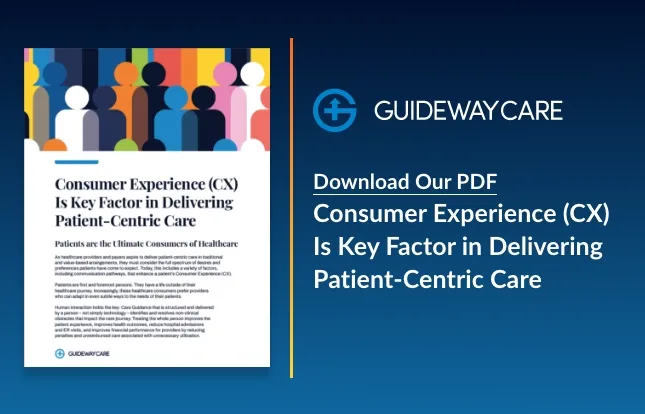Reducing Physician Burnout: 5 Strategies

Burnout, often defined as mental and physical exhaustion caused by excessive work-related stress, is a common issue in many professions, especially healthcare. In particular, nurses and physicians frequently experience burnout due to the stressful nature of their positions, and the number of healthcare practitioners who report feelings of burnout has been steadily increasing in recent years.
According to the 2019 Medscape National Physician Burnout, Depression & Suicide Report, 44 percent of physicians have feelings of burnout, and many of them cite bureaucratic tasks, long hours, and lack of respect as major contributing factors. Not only are high stress levels detrimental to the doctors themselves, but staff burnout can have a serious impact on patient care and medical outcomes, as well.
The Serious Effects of Physician Burnout
Studies have found that physician burnout can have a negative impact on several areas of their work. Research published in JAMA Internal Medicine found that physicians experiencing burnout are twice as likely to be involved in patient safety incidents, such as diagnostic errors, and twice as likely to display poor professionalism when communicating with patients. Given these correlations, it is not surprising that physician burnout is often also associated with lower patient satisfaction. These trends can be extremely detrimental to physicians and other staff, as well as to the organization itself, which is why many healthcare facilities are taking steps to help reduce burnout among their physicians.5 Ways to Reduce Physician Burnout
Burnout can be addressed at the individual level, by helping physicians find ways to cope with stress, as well as at an organizational level, by seeking ways to address the factors contributing to staff burnout. The American Association for Physician Leadership notes that the most effective strategies for reducing burnout rates usually involve a combination of individual and organizational initiatives.Invest in Leadership Development
The quality of leadership within an organization has a direct impact on physician stress levels, job satisfaction, and burnout. Research from the Mayo Clinic found that a one-point increase in the leadership score of a physician’s immediate supervisor is associated with a 3.3 percent decrease in the likelihood of burnout and a 9 percent increase in satisfaction.To reap these benefits, organizations need to hire leaders who will listen to, engage, develop, and lead physicians. Leaders should also be able to identify factors that motivate their team members, as this will help them assign physicians to patients and tasks where they will find the most job satisfaction.Offer Flexible Work Arrangements
One of the major factors contributing to physician burnout is long work hours, and while many organizations may think the solution is to assign doctors fewer shifts, this strategy may actually be counterintuitive. The American Medical Association notes that when physicians work limited hours, they often feel pressured to complete their normal workload in a shorter amount of time.Instead, organizations may want to consider more flexible scheduling policies. For instance, an increasingly popular concept in hospitals is a time-banking system, which awards staff “credits” when they go beyond their standard shifts, for instance, to work overtime or cover for a colleague. These credits can then be exchanged for incentives like meal deliveries, dry cleaning services, or other rewards that help restore work-life balance.Reduce The Technological Burden
Physicians often point to clerical tasks and burdensome technology as causes of burnout, so organizations may want to collect physician feedback about systems like electronic medical records (EMRs). According to the American Association for Physician Leadership, physicians often feel the increased documentation required by EMRs leads to decreased face-to-face time with patients, and many healthcare professionals become frustrated with having to learn and relearn these complex systems.“We went to school to see patients, but now, for every minute we have with a patient, we are spending two additional minutes on the computer,” Philip Kroth, MD, director of Biomedical Informatics Research at the University of New Mexico, explains to EHR Intelligence. “It often takes a 60-hour week just to keep up with documentation, and that is tough on personal relationships and families.” Solutions to mitigate technology-related stress might involve providing more comprehensive training, investing in a more streamlined EMR system, or even hiring scribes to take over charting.Provide Tools for Individual Intervention
While several things can be done at the organizational level to reduce physician burnout, individuals should also be encouraged to find healthy ways to cope with stress and prioritize their wellness. This could take the form of peer-support programs, self-care training, or even team meetings to discuss mental health. However, these types of programs should not be the sole way organizations seek to address burnout—they should merely supplement organization-level interventions for optimal effectiveness.Reduce the Burden of Non-Clinical Activities
Value-based payment models have driven the need for increased care coordination. The non-clinical tasks associated with care coordination often add to the workload of the clinical team. Utilizing non-clinical staff to coordinate care, connect patients with community resources, and generally fulfill the non-clinical outreach requirements of value-based care allows the clinical team to focus solely on clinical care.More Resources on Reducing Burnout:
Guideway’s non-clinical Care Guides seamlessly integrate with your clinical team, helping drive patient behavioral change and address barriers hidden within social determinants of health.
Fill out the form below to learn how Guideway Care can help provide the support your patients need while reducing the non-clinical workload of your clinical team.Contact Us Today To Learn How We Can Help
"*" indicates required fields




